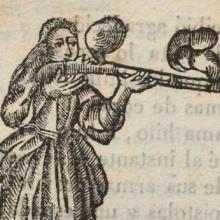Why are we fascinated by the wrongs that men (and women) do, or have done to them, and what can we learn about this from the example of Spain in the period 1800-1936? The ‘Wrongdoing’ project set out to explore three strands: the realities of wrongdoing, the varied representations (with particular reference to popular culture) and the issues related to our ‘consumption’ of these cultural products. The intention of the project was to explore society’s understanding of wrongdoing, and the way that this is translated into the world of culture. It was thus concerned not just with wrongdoing, but with the social and cultural responses it elicits. Such responses include anxiety, anger, desire for retribution, identification with perpetrators or victims of wrongdoing, the potential for vicarious engagement with wrongdoing through cultural artefacts. Looking at wrongdoing allowed for questioning of the processes through which it is evident that we, as cultural consumers, take a type of pleasure in wrongdoing. The evident public fascination with it can be traced from medieval ballad through to nineteenth-century broadsides, and eventually to sensationalist literary or visual representations of wrongdoing in our day. Included in the project was the digitization and cataloguing of ephemeral material in the University Library, Cambridge, and the British Library.


